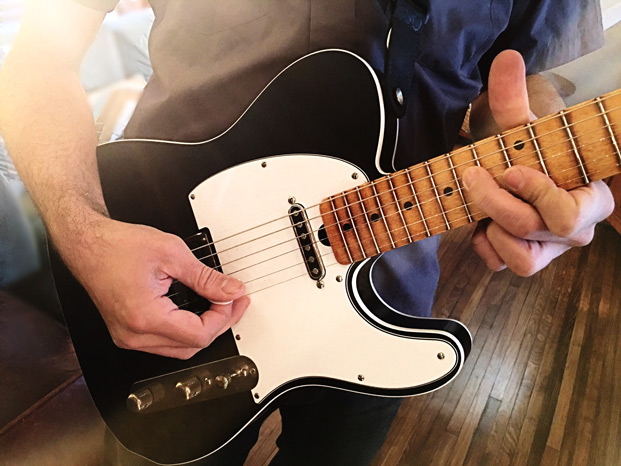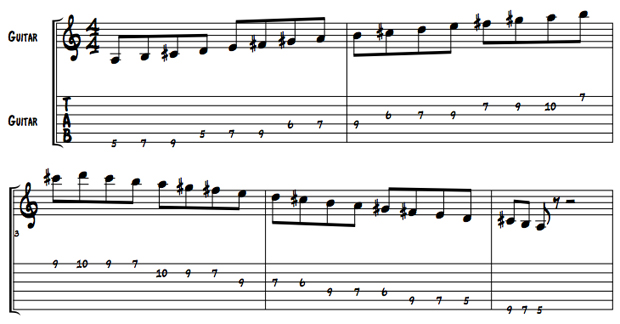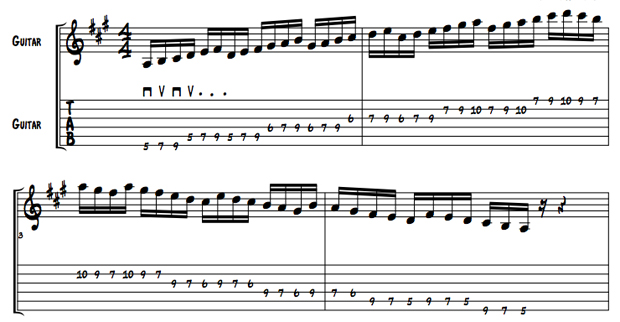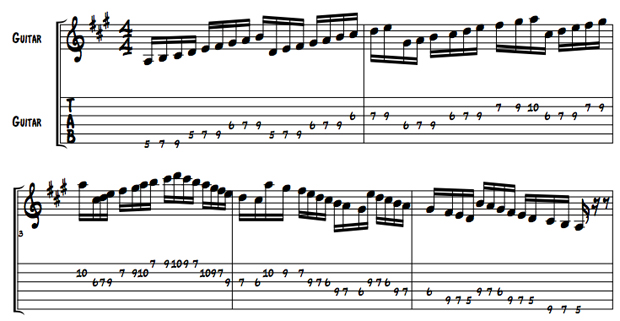Diatonic guitar scales: increase your picking strength and produce great-sounding sequences with this workout
This lesson will help you get the seven positions of the major scale memorized, increase your left-hand strength and deliver some great-sounding sequences.

This lesson takes the same ideas discussed in my last lesson, "Pentatonic Workout: Increase Left-Hand Strength and Produce Great-Sounding Sequences,” and applies them to the diatonic major and minor three-note-per-string scales.
This lesson will help you get the seven positions of the major scale memorized and under your fingers, increase your left-hand strength, solidify your alternate picking and deliver some great-sounding sequences.
It even includes some string skipping!
We’ll use the A major scale at the fifth position as our example in this lesson, but you’ll want to make sure you can perform this set of sequences back to back in all seven positions.
This workout starts with playing the A major scale ascending and descending (EXAMPLE 1), using consistent alternate picking. After this “establishes” the fingering for your left hand, the workout continues with a two-string sequence, where you ascend six notes, go back two notes and start again, ascending another six notes.

This continues across the fretboard until you run out of strings. At this point, you simply turn the sequence around (Don’t repeat the top note, D), and play the two-string sequence in reverse: From the high D note, you descend six notes, go back two notes, descend another six, etc. (EXAMPLE 2).

This sequence tends to be a very friendly pattern for guitarists, as it starts on the first note on each string as it travels across the six strings.
The third part of this workout is a sequence that ascends in nine note groups (three strings' worth of major scale), then back a string. Start on D (fifth string) and ascend another nine notes (three strings). Continue this pattern until you start the sequence on the G string, at which point you simply turn the pattern around (Don’t repeat the top note, D), then perform the sequence in reverse: From the high D note, you descend nine notes (three strings), go back a string, start the nine-note pattern again on the A note (second string) and continue back in the same fashion (EXAMPLE 3).

The fourth and final part of this pentatonic workout involves string skipping. Playing the three notes on the low E string, skip the A string, play the three notes on the D string, go back to the A string and play the three notes on it, then skip the D string and play the three notes on the G string. This pattern continues, gets turned around just like before and works its way back in reverse (EXAMPLE 4).

I like to string these four elements together, playing them back to back without stopping. This forces me to think ahead and be able to change gears and mix things up in my regular playing more easily.
Once you are able to play these four elements back to back without problems, try it with the other six diatonic three-note-per-string scale positions. Use a metronome to gauge your progress, and push yourself to play these at a faster tempo once they become comfortable.
Guitarist Adrian Galysh is a solo artist and education coordinator for Guitar Center Studios. He's the author of the book Progressive Guitar Warmups and Exercises. For more information, visit him at AdrianGalysh.com.
Get The Pick Newsletter
All the latest guitar news, interviews, lessons, reviews, deals and more, direct to your inbox!









![Joe Bonamassa [left] wears a deep blue suit and polka-dotted shirt and plays his green refin Strat; the late Irish blues legend Rory Gallagher [right] screams and inflicts some punishment on his heavily worn number one Stratocaster.](https://cdn.mos.cms.futurecdn.net/cw28h7UBcTVfTLs7p7eiLe.jpg)
